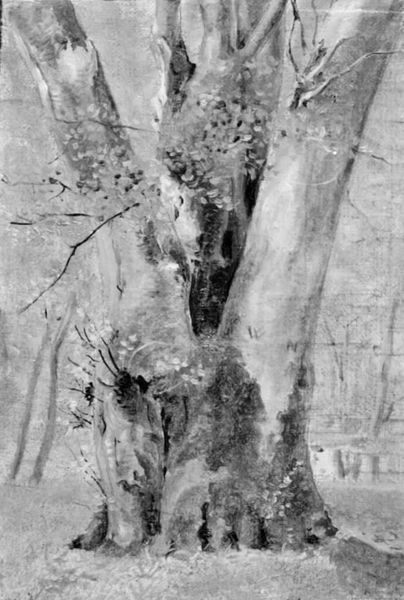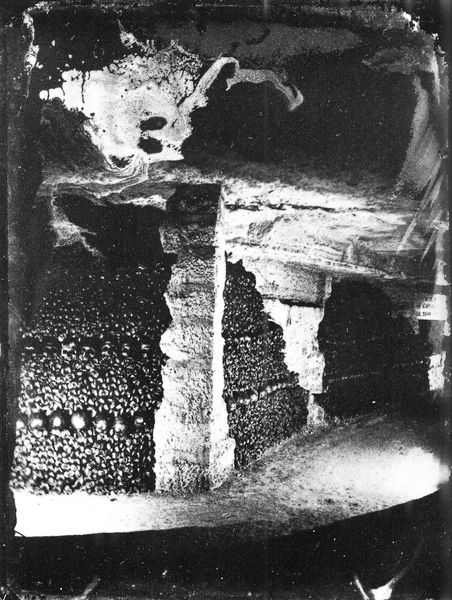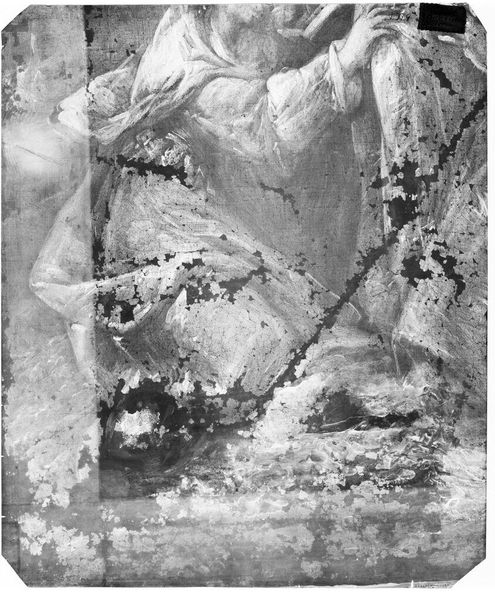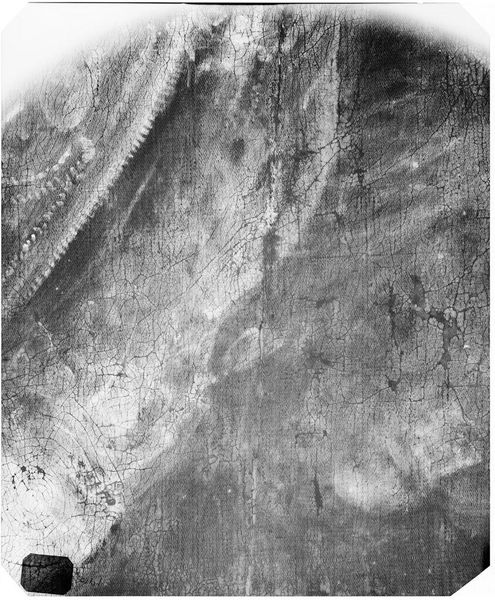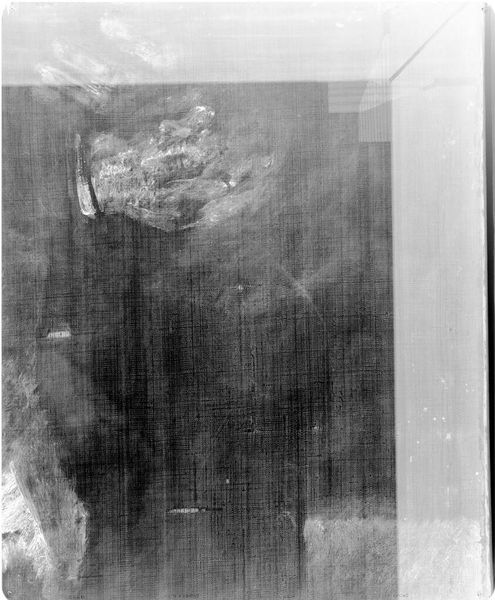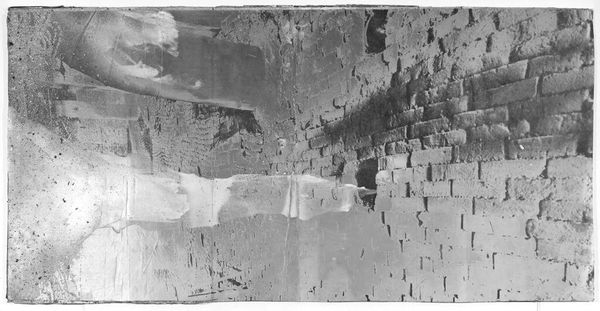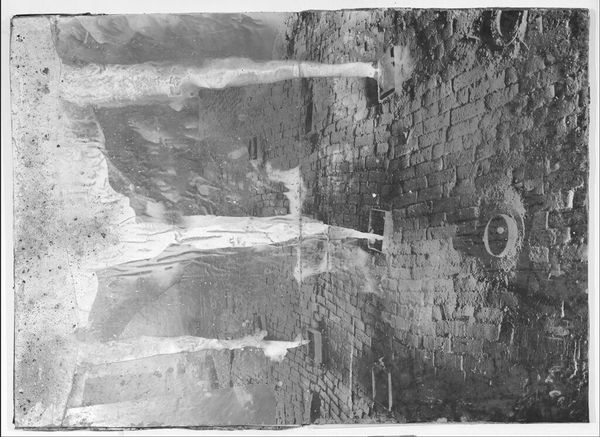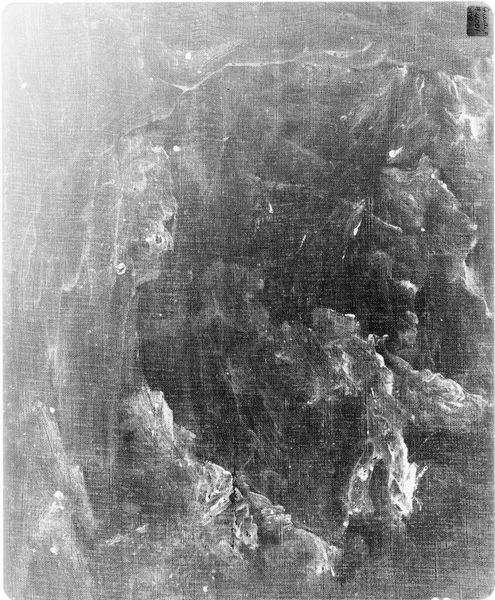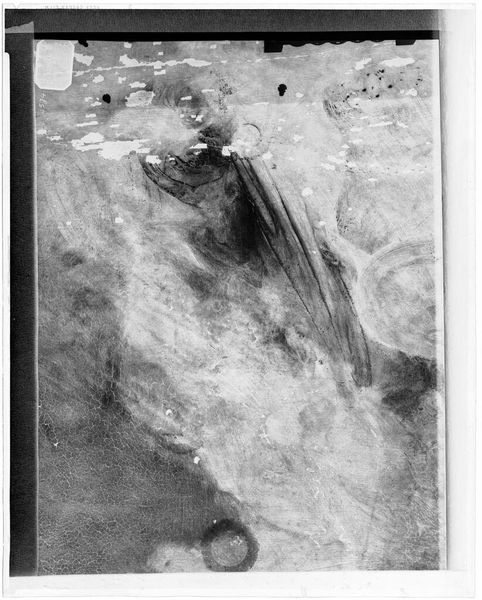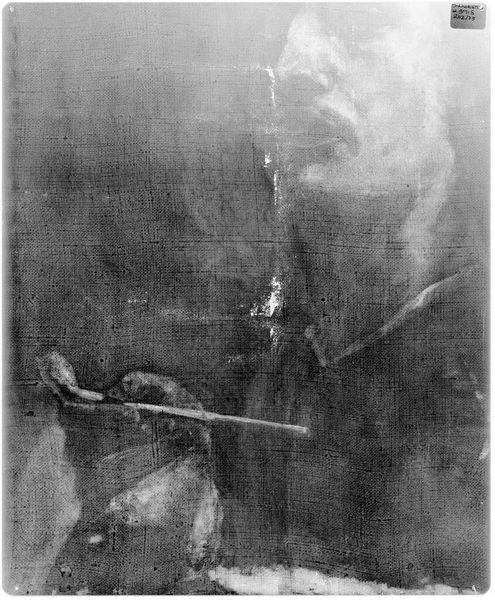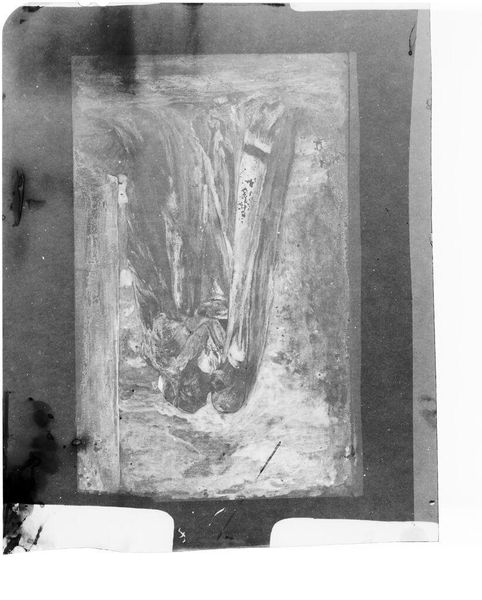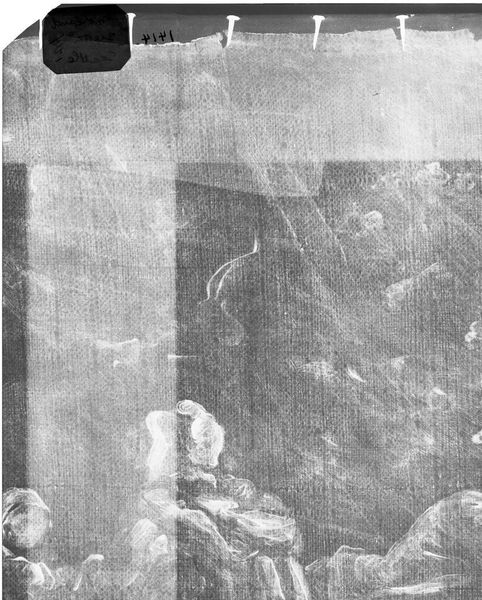
painting, oil-paint
#
painting
#
oil-paint
#
landscape
#
german-expressionism
#
black and white
#
expressionism
#
abstraction
#
monochrome
#
monochrome
Dimensions: 71.6 cm (height) x 56.4 cm (width) (Netto)
Editor: Here we have Leander Engström's "The Waterfall in the Ravine," created between 1916 and 1919 using oil paint. It's quite stark, really—all in black and white. It feels both abstract and imposing, a bit like staring into the heart of a storm. What strikes you most about it? Curator: It's fascinating how Engström distills the raw energy of nature into such a simplified, almost brutal, form. It reminds me of trying to capture a feeling more than a scene, right? The monochromatic palette pushes the contrast to the extreme. It makes me think about light and shadow, how they sculpt the world. Do you feel a sense of movement or stillness when you look at it? Editor: I definitely feel the movement – the waterfall practically roars off the canvas, even though it’s just shades of gray. It's funny, the lack of color actually makes it more dramatic somehow. Curator: Precisely! It forces us to focus on the texture, the flow, the sheer power that’s conveyed through those bold, almost violent, brushstrokes. He's not painting water; he's painting the experience of water, if that makes sense. What do you make of the composition itself? The way the forms are arranged? Editor: The composition feels very unbalanced. That dark mass on the left seems to push everything else off to the side, creating tension, as if everything's about to slide down. Curator: Yes! And perhaps that’s intentional, a way of mirroring the instability of nature, or even of the artist’s inner world during those tumultuous years of World War One. It makes you wonder what he was trying to express, beyond just a pretty landscape. Editor: It definitely gives me a lot to think about! I hadn't considered the impact of the historical context. Curator: Art's like a mirror, reflecting both the artist and the world around them.
Comments
No comments
Be the first to comment and join the conversation on the ultimate creative platform.
